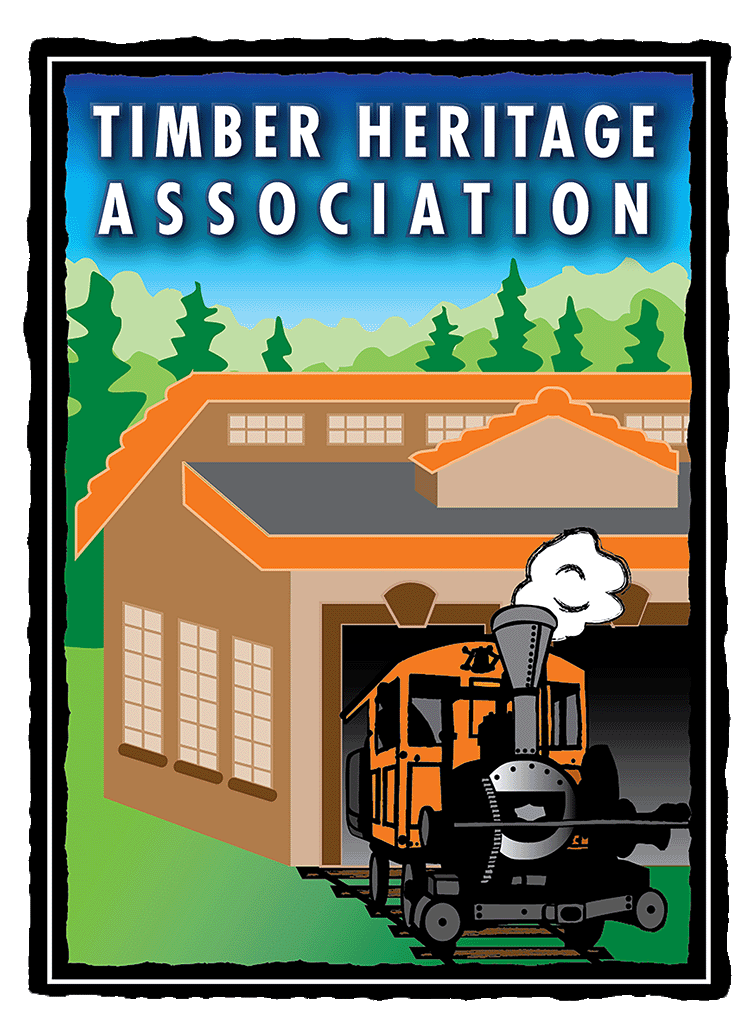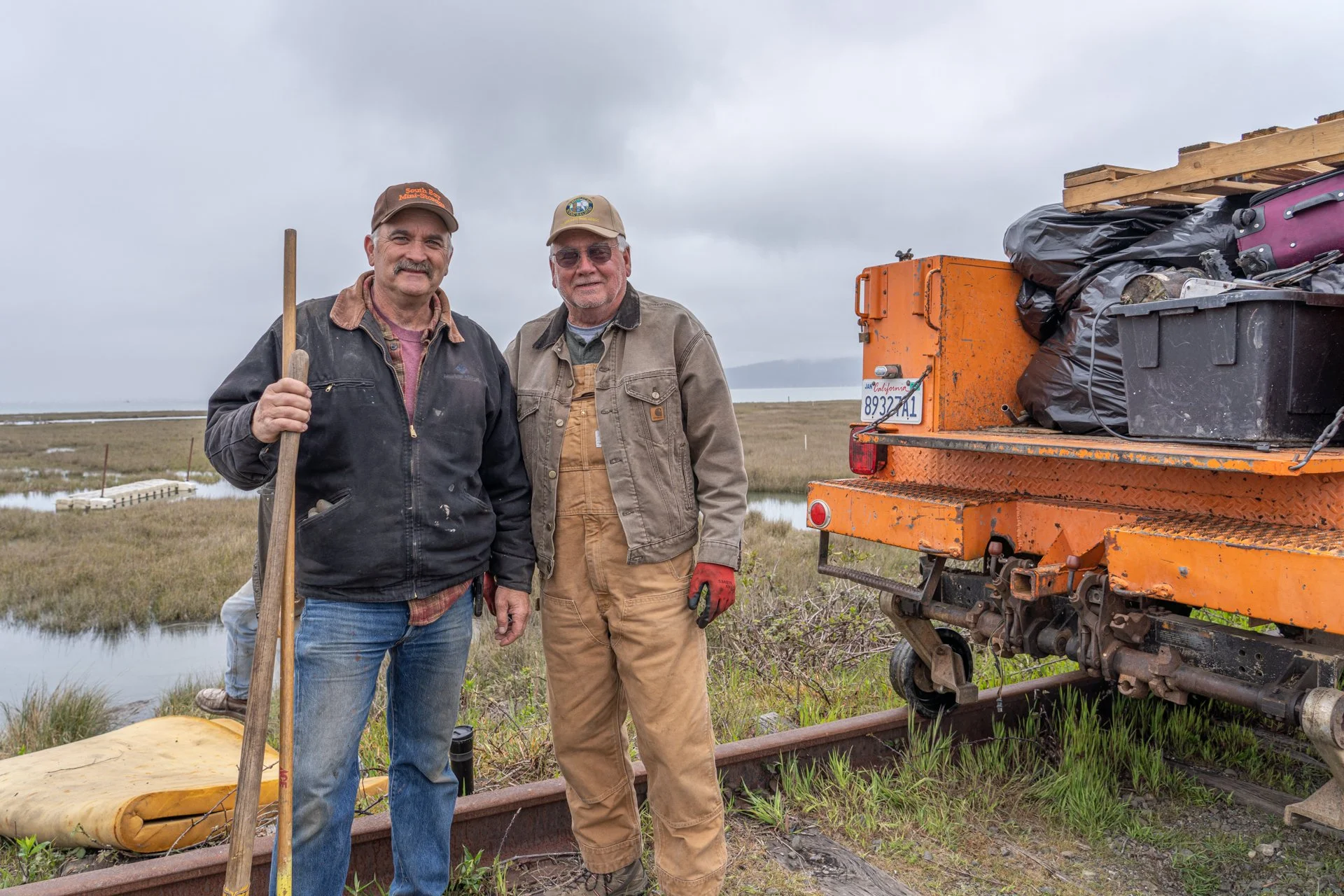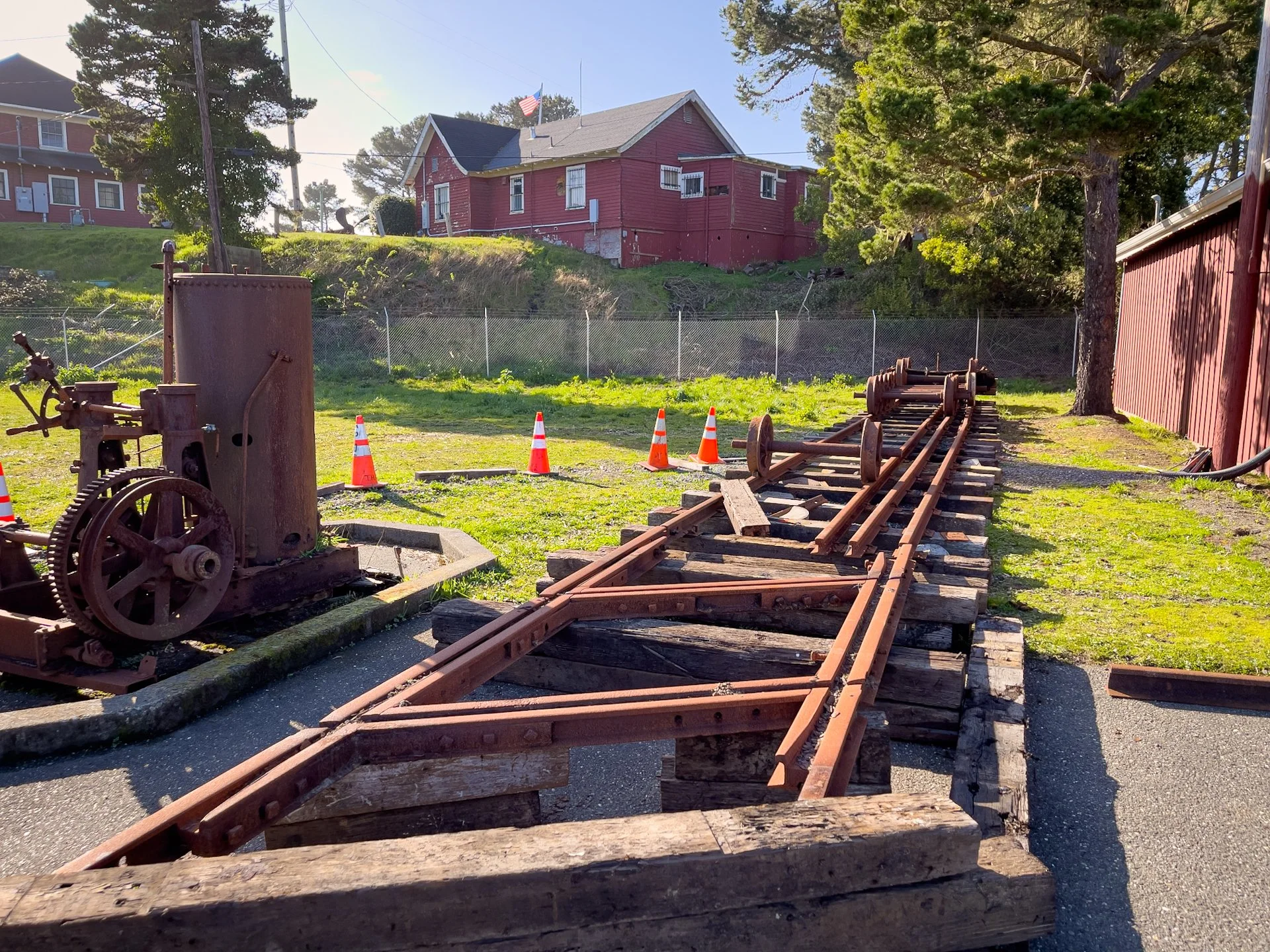
Our Mission
To preserve, interpret, and celebrate our timber heritage.
Humboldt County’s history is intertwined with the history of timber and the redwoods. The first European settlers came north for the riches of the gold rush but found gold in the massive trees instead. Riches from timber-built our towns and changed the landscape. William Carson’s business partner, John Dolbeer, invented the steam donkey right here in our local woods in 1882, which replaced animal power to pull logs in from the woods. It was the first mechanization in the woods using steam power and is heralded as the beginning of the modern timber industry. This is our heritage. It is also an important national story, which has not yet been told. In fact, the history of timber in America has not been taken up in-depth anywhere.
Here in Humboldt County, we have an incredible opportunity. A collection of all local timber history artifacts has been accumulated by the Timber Heritage Association over several decades. From the start, the intention of our founders was a museum to tell our story of timber heritage. Our storage site has quietly received many artifacts that would otherwise have been lost. Many people ask, “Whatever happened to the locomotive that was in Sequoia Park?’ It was donated and moved to our storage site. Many items, large and small, covers several acres. It is unique because it is all from one place: Humboldt county. Other such collections have been put together by getting pieces from all over.
We are very fortunate to have a collection and a historic place that they came from still in existence. Because the collection had to be relocated, THA was able to get a lease on the railroad shop complex of the former Hammond Lumber Company at Samoa, California. Within this complex is an 1890’s roundhouse, which housed the locomotives. Intact roundhouses are coveted and the fact that we have one still standing is extremely valuable. This Crown Jewel is set in the context of the still-standing Hammond Lumber Company town of Samoa, again a rare and valuable historic asset. The complex is adjacent to Hammond’s world-famous Samoa Cookhouse, which is an icon for tourists and has been in operation for over 100 years. Our goal is to put this collection of timber history artifacts in a museum in the midst of the authentic setting. From this site, we will run an excursion train around the bay using our authentic railroad equipment. This will be a fun and exciting way to experience this history.
In addition to being able to enjoy our own history, the project has important economic impacts on our area. The Convention and Visitor’s Bureau has said that the excursion train and museum would be the core attraction that other items could be added to so that tours can be created. Over a million tourists travel here every year to see the redwoods. Their stay is usually short because there are not enough activities to keep them here longer. The Visitor’s Bureau’s goal has been to lengthen the stay of visitors, and our project will have a major beneficial impact on that goal, increasing the tourist dollars coming in dramatically.





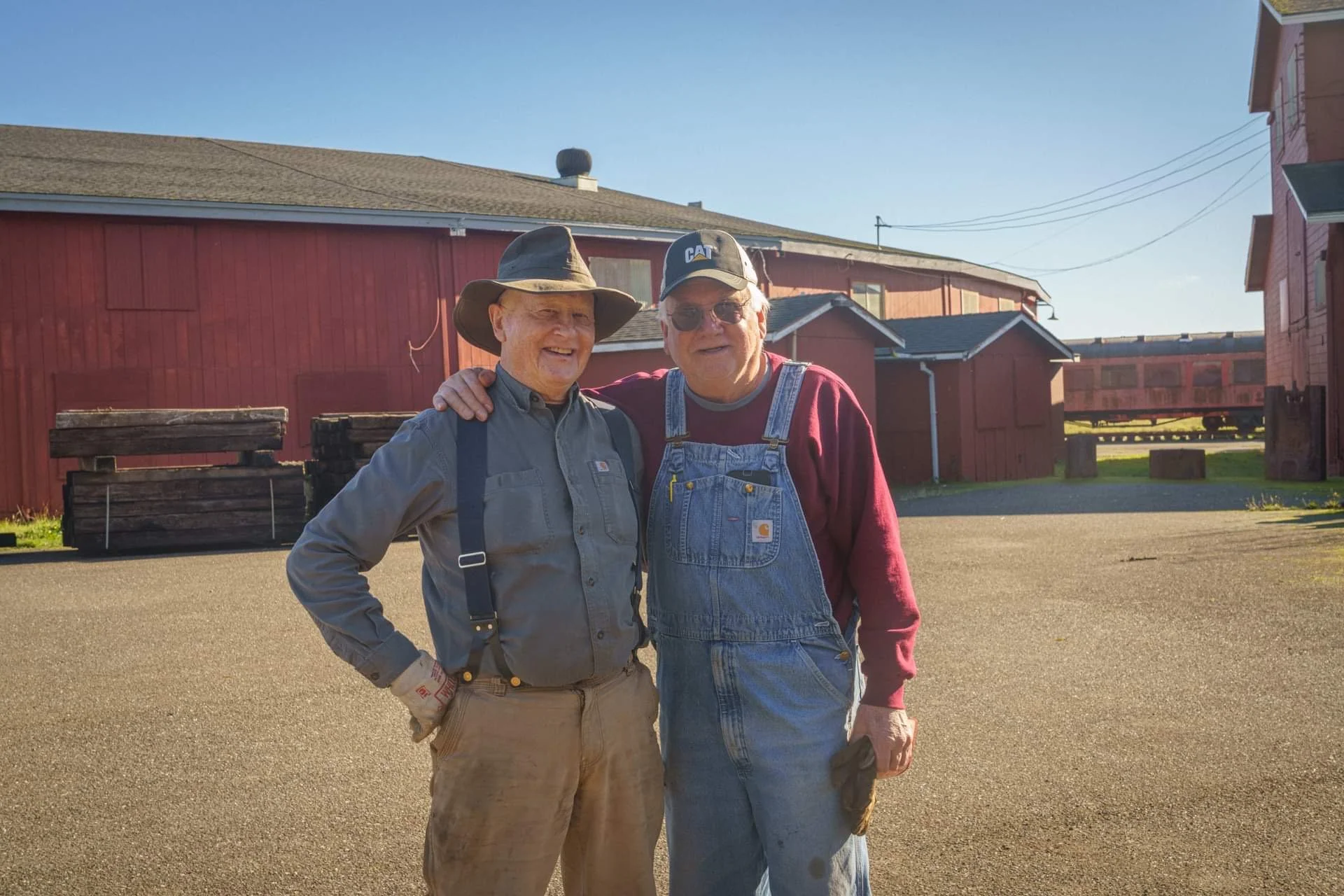



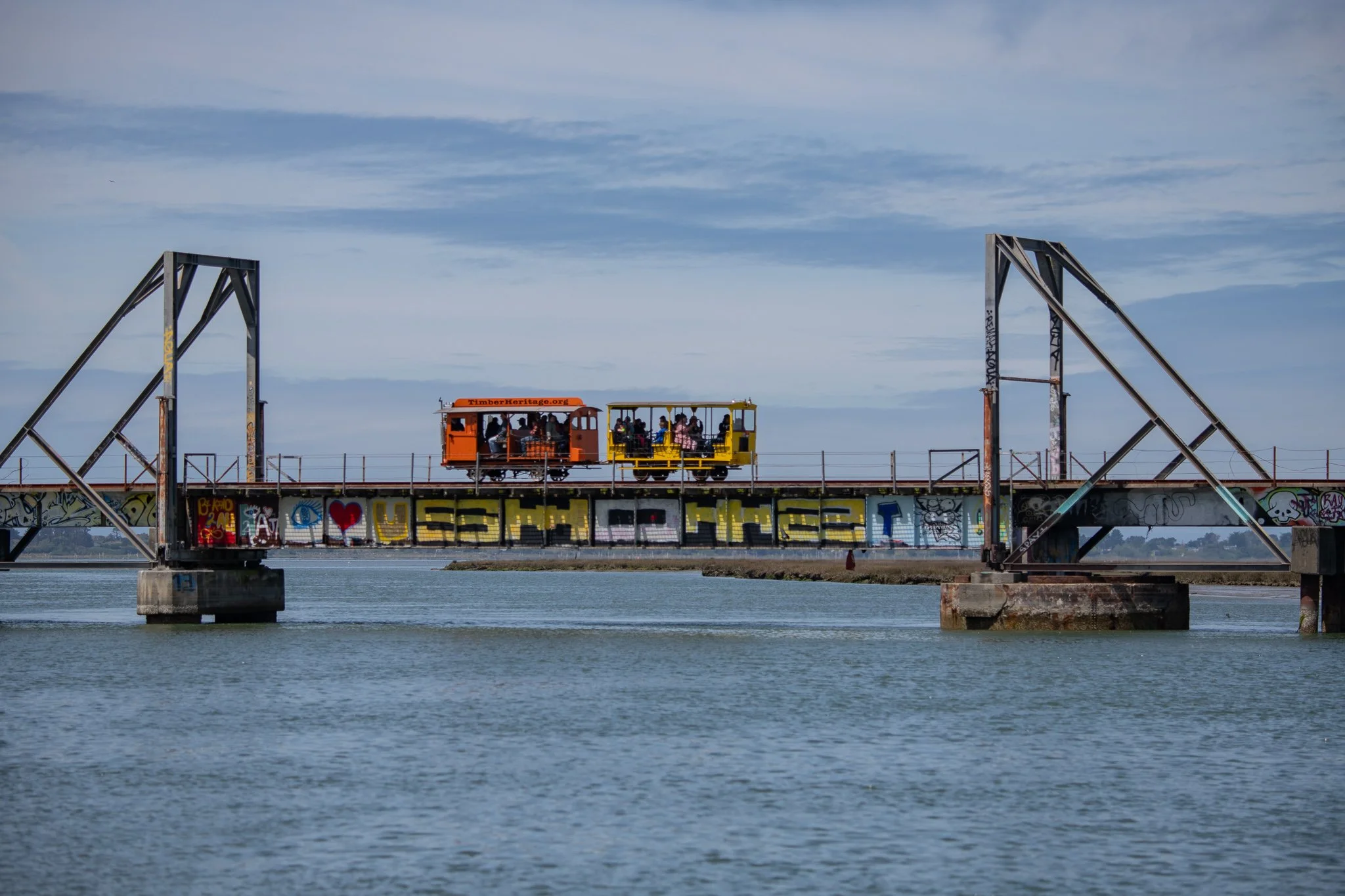
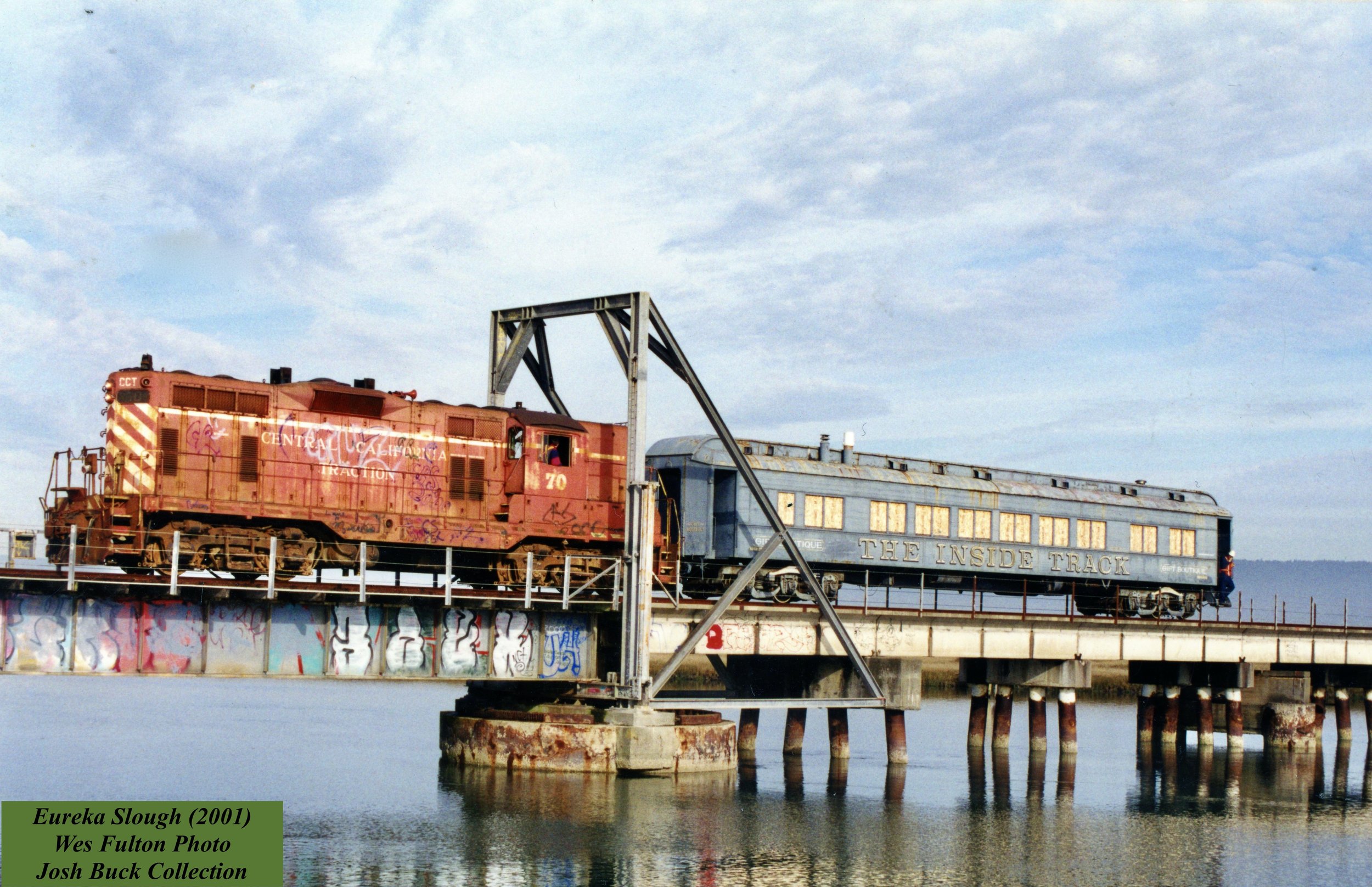



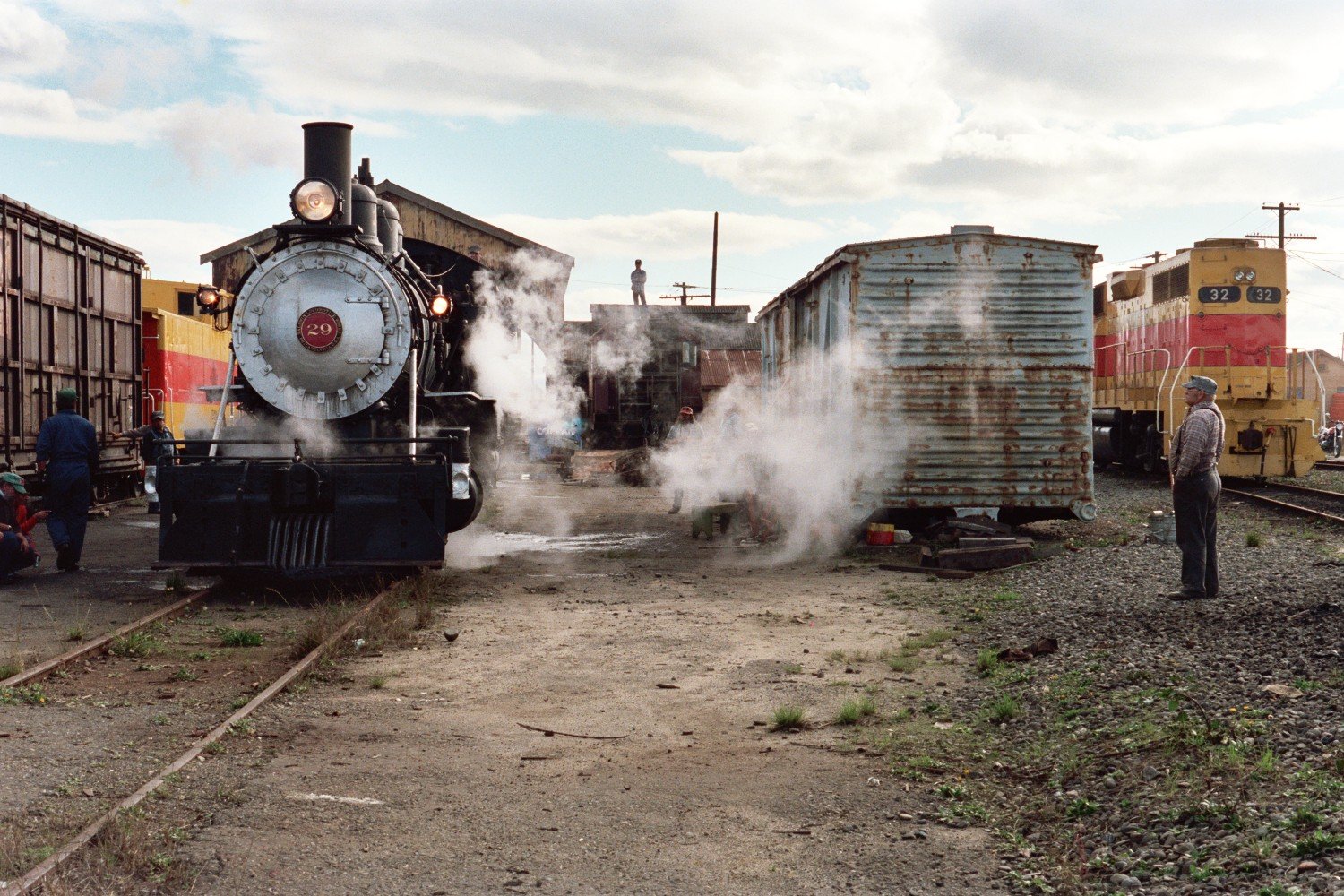

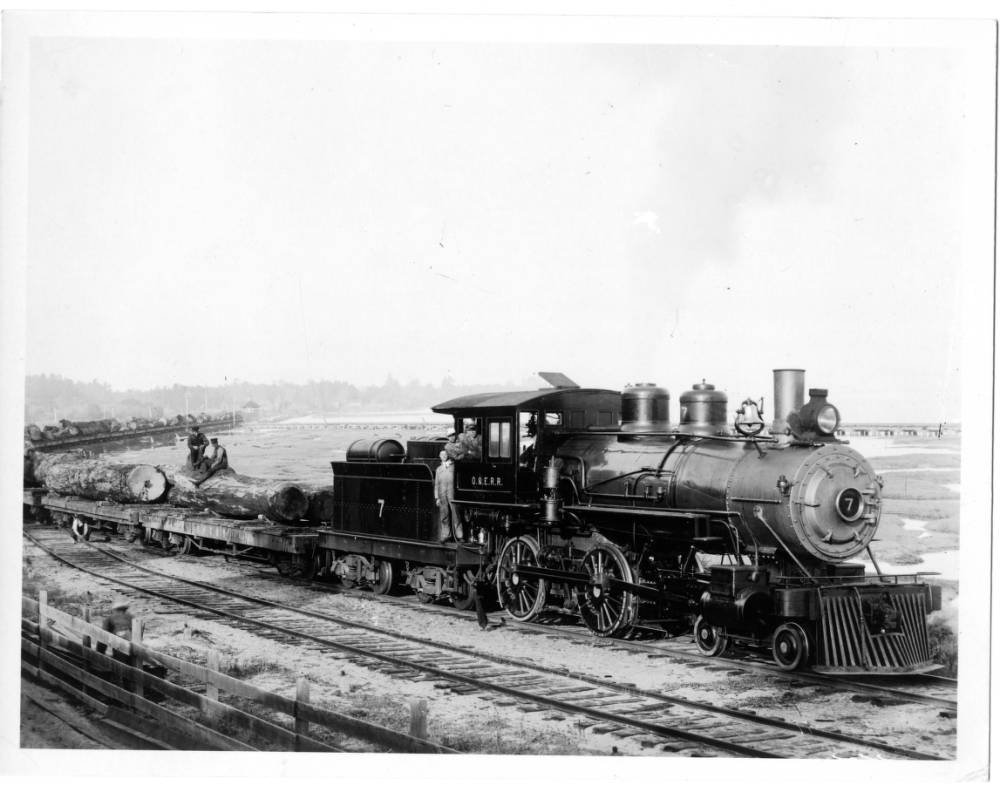
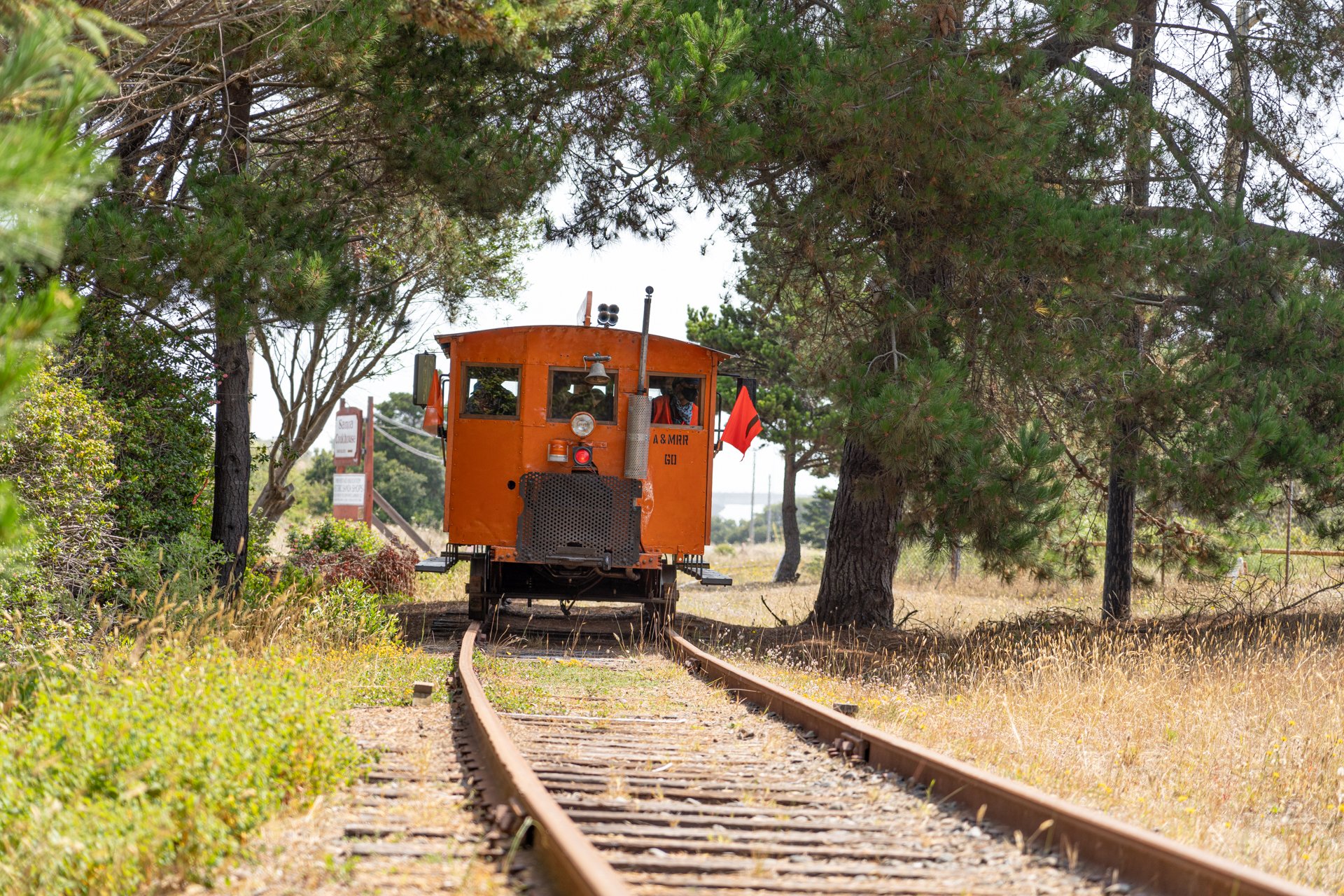



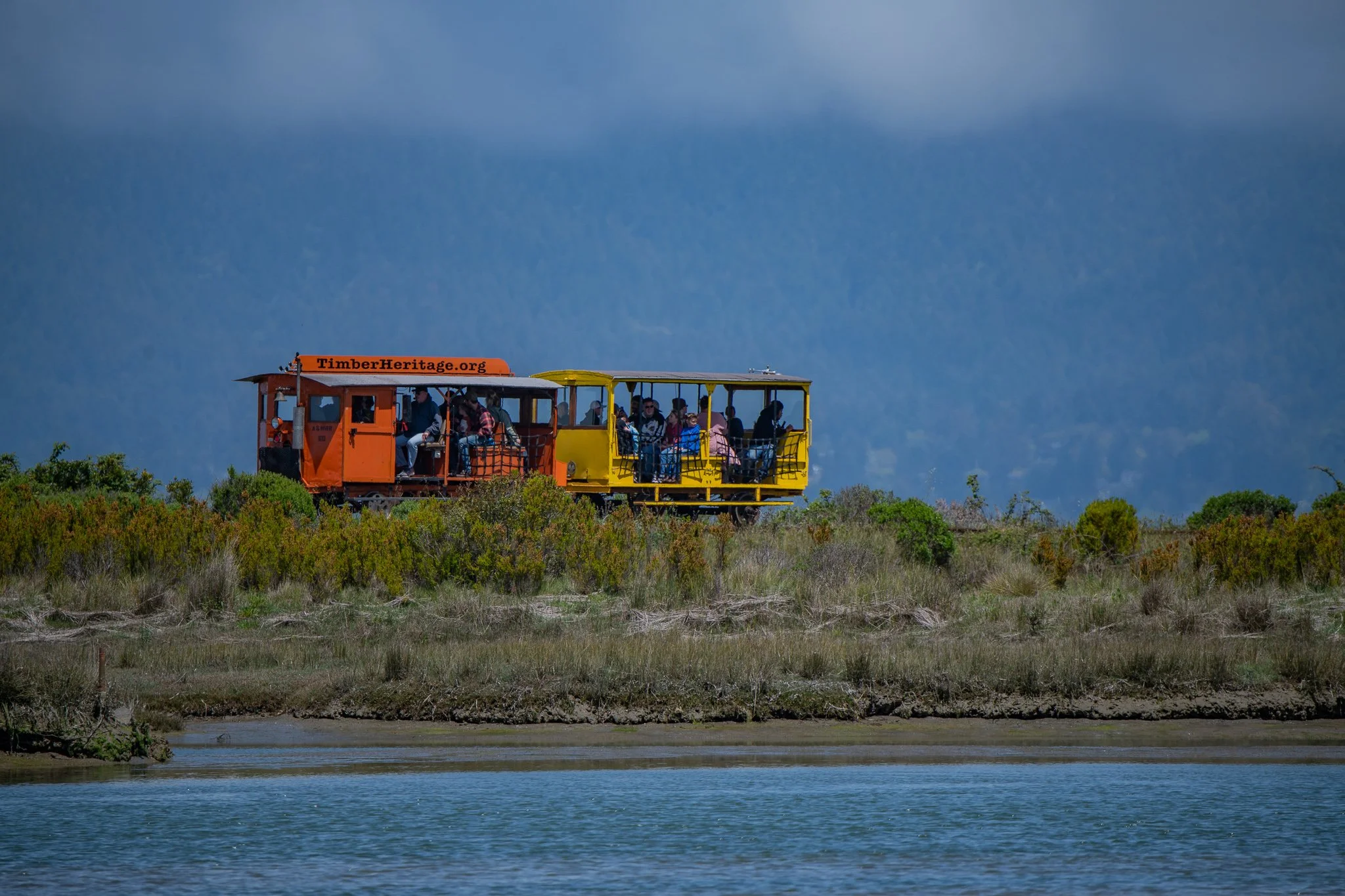






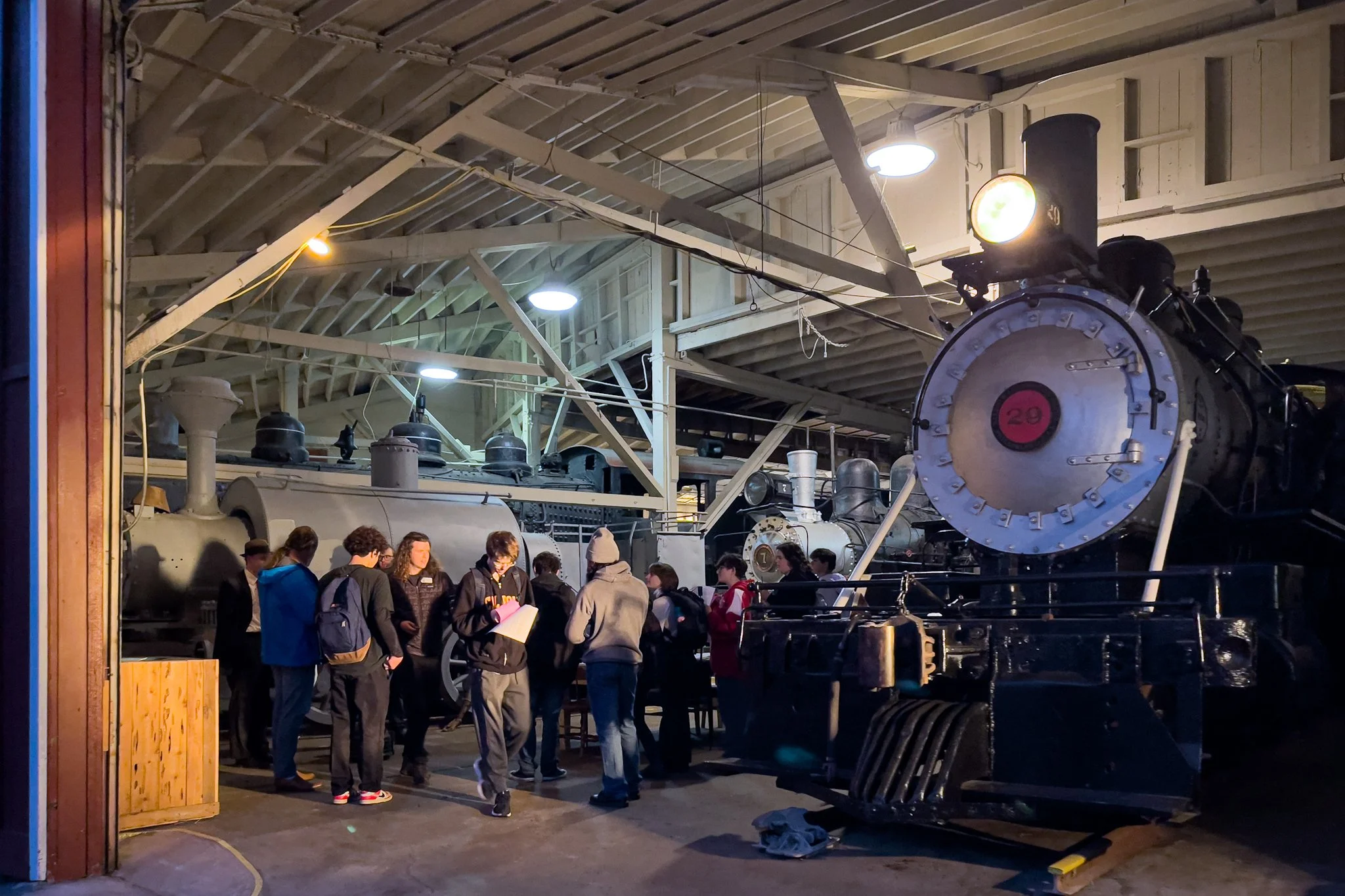
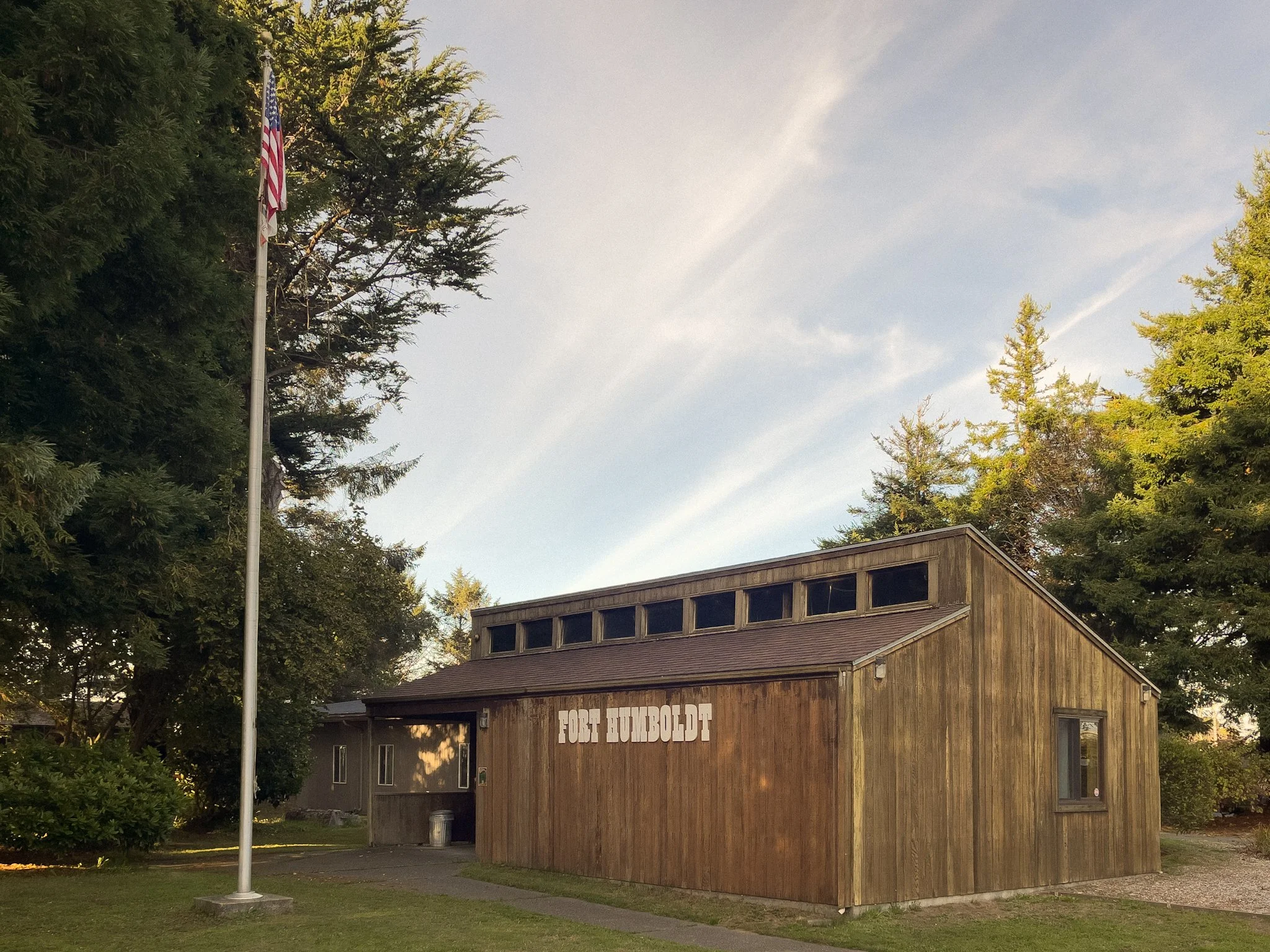
1893 Blacksmith Shop Restoration, Samoa, California
Debris cleanup on GRTA railroad corridor, Eureka, California
Community Benefit
No substantial Timber Heritage Museum exists elsewhere. There are displays, there are artifacts, many small county or city level museums cover logging history as a part of a broader story, but none takes a comprehensive look at the history of the timber industry as it contributed to state or national development. The National Park Service has toured the area and met with Association representatives regarding the potential for establishing a Redwood Timber Heritage Area centered in the Eureka – Arcata area “ to link and interpret theme-related museums, historic sites, artifacts and locations.”
FAQs
When is the Timber Heritage Museum open?
The Timber Heritage Association welcomes visitors to experience our Samoa site on the fourth Saturday of the month during the summer season - typically May to September, as well as on our scheduled volunteer days. We look forward to your visit!
When are Crew Speeder Rides?
The Timber Heritage Association offers exciting Crew Speeder Rides on the historic Eureka and Samoa GRTA railroad corridor. These rides typically take place on the second Saturday and fourth Saturday of each month, between May and September. Second Saturdays are in Eureka, fourth Saturday in Samoa.
Where is the Roundhouse?
930 Vance Ave, Samoa, CA 95564
Board of Directors, 2024
President - Sean Mitchell
Vice-president - Pete Johnston
Secretary - Jennifer Johnston
Treasurer - Stephanie Price
Bernie Christen
Chet Ogan
Megan Flannery
Mike Kellogg
Thad Wuest
Bill Kriner
Jack Jenson
Jacob Cowan








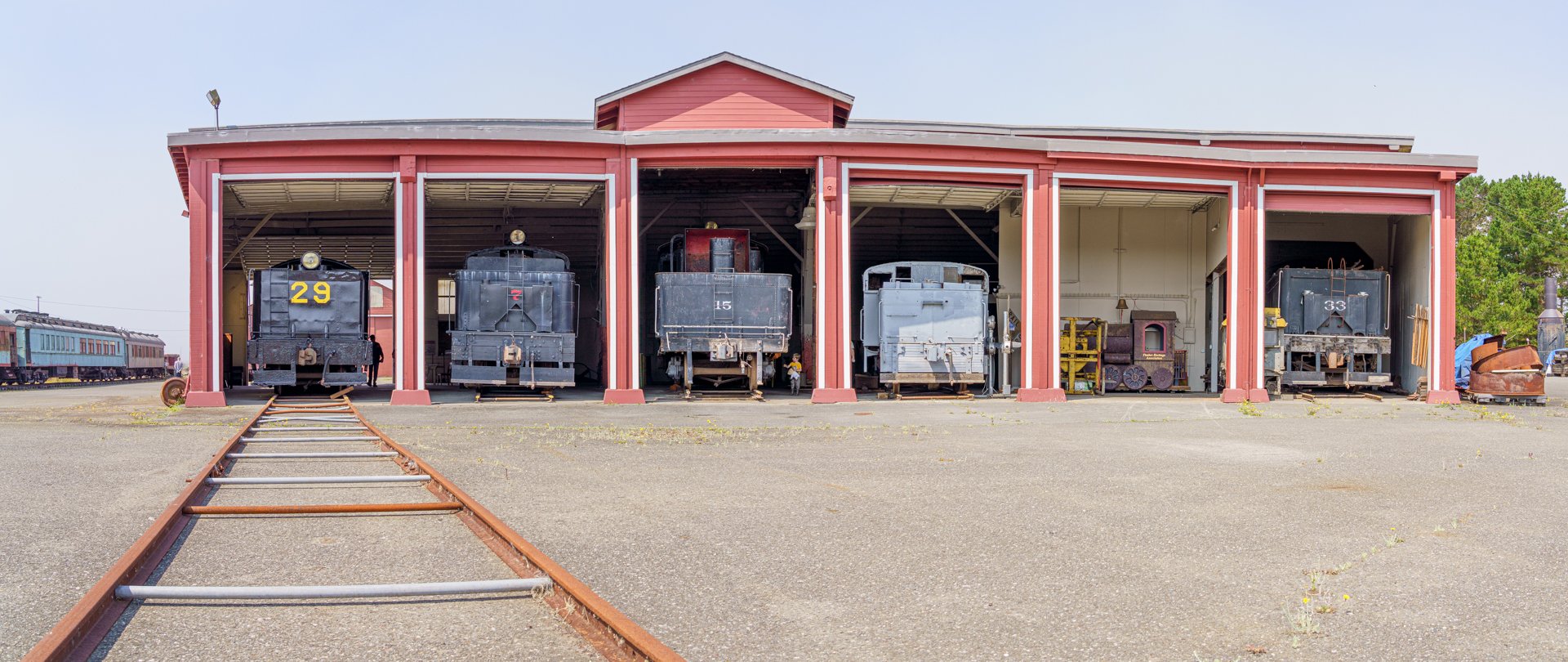



Land Acknowledgement
The Board of Directors, members, and volunteers of Timber Heritage Association, acknowledge that the 1893 historic Samoa shops, roundhouse, and property which make up the THA historic museum site are located on the present and ancestral land and unceded territory of the Wiyot Tribe. We honor and acknowledge all Indigenous federally and non-federally recognized tribal people still present in Humboldt County today including the Yurok, Hupa, Karuk, Mattole, Tolowa, and Wailaki, among others.
We honor and celebrate the contribution that members of Indigenous tribes have made to the timber industry in Humboldt County, whether they were Yurok tree-toppers, Hupa mill-workers, or others who worked in the woods.
As you visit the shops and property here in Samoa, when you ride the speeders, when you attend celebrations here, keep in mind that Indigenous people were here first and that we acknowledge and respect their history.
THA History
A group of individuals interested in preserving timber industry history formed the Northern Counties Logging and Interpretive Association, a non-profit corporation, in 1977. Activities of members centered around a logging exhibit at Fort Humboldt State Historic Park in Eureka. These individuals had urged the creation of the exhibit; they now wanted to develop and expand the effort as a Cooperating Association of the park unit. The organization restored a steam donkey, Bear Harbor Lumber Co. locomotive No. 1 and Elk River Mill & Lumber Co. locomotive No. 1 to operating condition, demonstrating them at “steam-ups” at the park and taking them on the road to logging conferences and railfairs as far away as Vancouver, Canada.
The Fort Humboldt exhibit and museum was always “temporary” on the park’s master plan. Too small to house logging artifacts that were going to be lost, the organization and park officials began to search for a larger site for a State Logging Museum. At the same time, the Association began to acquire historic timber artifacts on its own by donation, through obtaining grants and by purchase, to eventually become a part of the relocated state museum. After a first storage site didn’t work out, Simpson Timber Company, in 1985, agreed to lease a site along the Arcata & Mad River Railroad at Glendale for $100 a year. For years Association leaders and state park officials looked for an appropriate site. As time passed, district state park leadership became concerned that the effort would ever be successful. They began to draw a distinction between park activities and our other efforts to save artifacts. Finally a park superintendent candidly admitted that the State was never going to build a state logging museum; State Parks didn’t have the resources to build museums anymore. The Association was at a critical point and had to decide what direction to take. The decision was that the need had not changed, the stories of a rich timber history needed to be told in a Timber Heritage Museum–the Association decided to develop its own museum.
The name of the organization was changed to the Timber Heritage Association in 2004. While the Association continues to support the logging exhibit at Fort Humboldt State Historic Park, its activities are now much broader. Its mission is to develop a Timber Heritage Museum and create an excursion train around Humboldt Bay. Major steps to restore locomotives and obtain passenger cars have been undertaken.
With change comes new challenges. In 2006, the THA storage yard at Glendale was sold. Hundreds of thousands of tons of artifacts would have to be relocated. Board member Woody Murphy generously offered temporary storage on his property along the bay in Fields Landing. Part way through the move, through a variety of circumstances, a very historic site, the 122 year old former Hammond Lumber Company roundhouse and shops in Samoa became available for short term lease. Eight locomotives were moved into the Roundhouse or other shop buildings on site. Many local businesses have donated equipment and trucks to help in this move. The leased Samoa Shops site came with a $39,600 yearly lease but the Harbor District has allowed THA to pay that through volunteer labor, business donations of materials and labor to repair and restore the buildings. Many businesses and individuals have donated to this cause.
In 2015 THA signed an Option Agreement to purchase an eight acre site. THA must access and pay for clean-up of any environmental hazards or contaminants and pay all costs for zoning changes, transfer of title and Coastal Commission approval. That process has begun but will take some time.
Samoa Shops & Roundhouse
John Vance, pioneer Humboldt County Lumberman, died in January of 1892. His million dollar estate included 10,000 acres of land, a sawmill in Eureka, a mill on the Mad River, the nine mile Humboldt & Mad River Railroad (connecting his Mad River mill with the northwest corner of Humboldt Bay), lumber ships, bay steamers, the Vance Hotel and controlling interest in the Eel River & Eureka Railroad. While his estate was being settled, the Eureka mill was destroyed by fire. Heirs of the John Vance Mill and Lumber Company decided not to rebuild the mill in Eureka but to purchase land in West Eureka or Samoa from the Samoa Land and Improvement Co. Additional land in Eureka would have been too expensive for the large modern sawmill they planned to build. The Samoa development was 270 acres, extending from the ocean to the bay and included one mile of waterfront. In December, 1893, the Vance Lumber Company incorporated the Eureka & Klamath River Railroad Co. to run from Eureka (by ferry) to Samoa, then by rail to Arcata, cross the Mad River and continue upstream to Vance’s timber. The new Samoa mill produced its first lumber in 1894. The mill was improved when new modern equipment was installed in 1895. The modern sawmill produced 60,000 to 70,000 board feet a day and employed 200 men in the sawmill and 120 in the woods. The railroad was extended from the north Humboldt Bay terminus to Samoa in 1896. Between 1893 and 1896 the company spent $500,000 building the sawmill, the railroad, depots at Eureka, Samoa and Arcata, a car shop, a roundhouse and a cookhouse. A.B. Hammond purchased the John Vance Mill and Lumber Co. and the Eureka & Klamath River Railroad for $1,000,000 on September 1, 1900. He continued buying timber land, expanding the production facilities and size of the operation for 56 years. Hammond Lumber Company became the largest redwood lumber mill anywhere.
The roundhouse and shop complex (including a machine shop, blacksmith shop, boiler shop, tin shop and car shop), built beginning in 1893, not only maintained and repaired railroad equipment, they repaired and built equipment for the woods operations, the sawmill, the planing mill and even made major repairs on company-owned steamships. In the 1940s it was as large or larger than any other California lumber company shop complex. The Samoa Shops facility was large enough and well equipped enough to build an entire 112 ton, consolidation type, 2-8-0 wheel arrangement steam locomotive in 1910. Most logging locomotives, until the Northwestern Pacific Railroad was completed in 1914, were small as they had to be brought in by ship. The home-built locomotive No. 11 was the largest locomotive in Humboldt County. It was even too large for the roundhouse entrance, so one of the center bays had to be heightened to accommodate the locomotive. The addition is still obvious today. In fact the roundhouse is little changed from its original configuration. The roundhouse exterior was board and bat which remains in one small section though most has been covered up with particle board siding. The upper clerestory windows have been boarded over, other windows have been replaced with modern versions but in the same openings; doors, which were unnecessary in steam days since someone had to be around to keep the locomotives warm all night, have been added. The other buildings are also intact with similar modifications.
Victorian homes and store fronts survive in many small cities like Eureka, but it is amazing that these 115 year old industrial buildings still remain with so little modification. Though in disrepair, they are treasures – monuments to our past – which tell stories that can’t really be experienced in any other way.
The Shops Complex
The Samoa Shops complex and roundhouse sits just below the Samoa Cookhouse. Workers ate here every morning and then walked down a wooden stairway to their shop and mill jobs. The cookhouse has been in continuous operation since 1893. Its appearance and food are much the same as it has always been. Historic photos and antique equipment surround those who eat there to emphasize the experience. Across the former lumber yard is a part of a once 1,275 foot long warehouse built in 1920 where 17 box cars could be loaded with lumber at the same time to be shipped all over the United States. More lumber was loaded off the dock outside to be exported on ships to ports around the world. The building was a landmark with huge letters on the bay side spelling out “Hammond Lumber Company.” Adjacent to the Cookhouse is a company town with original houses and a mercantile, business and office building called the “Samoa Block.” The town is owned by a developer today but for over one hundred years it was a lumber company town. Even though it is only a couple of miles from Eureka, it is very rural and scenic. The tower of the Carson House, home of a Vance and Hammond competitor, can be seen across Humboldt Bay and Woodley Island. Its not hard to imagine and almost experience . . . .
Shop Site Becomes Available For Short Term Lease
The Samoa Shops site was, until recently, under consideration for purchase by a developer who was going to trade the parcel for another property he wanted to develop. That scenario changed when the rules in regard to Tsunami danger made the residential development no longer viable at the other property. It was suggested by a member of the board of supervisors that we approach the Harbor District about leasing some of the site especially for the locomotives and artifacts that had been or needed to be stored inside. The Harbor District was willing to try to work something out. The buildings were in need of immediate stabilization. The agreement made was that the value of volunteer or donated work, at prevailing wage, and the value of donated or purchased materials could be used to offset the monthly rental fee of $0.20 per square foot per month of the boiler shop and roundhouse. The square footage of the first two buildings was 16,500 so the total yearly rent was $39,600. After meeting permit, insurance, security and other requirements, the Association got keys to the building on March 9, 2007 and began immediately moving items to the site. Since the initial lease, the area has been extended to all the historic buildings.
In 2015 THA signed an Option Agreement to purchase an eight acre site. THA must access and pay for clean-up of any environmental hazards or contaminants and pay all costs for zoning changes, transfer of title and Coastal Commission approval. That process has begun but will take some time.
Samoa Shops & Roundhouse Complex Under THA Ownership
As of 2023, the Timber Heritage Association is the proud owner of the historic Vance / Hammond Lumber Company buildings in Samoa after years of putting in tens of thousands of volunteer hours of repairs to the roundhouse and maintenance buildings. A ribbon-cutting ceremony was held in early 2023 to celebrate the occasion, where THA thanked the Humboldt Bay Harbor, Recreation, and Conservation District for letting them purchase the property. The property includes several historic buildings, including the oldest remaining wooden roundhouse in the United States.
